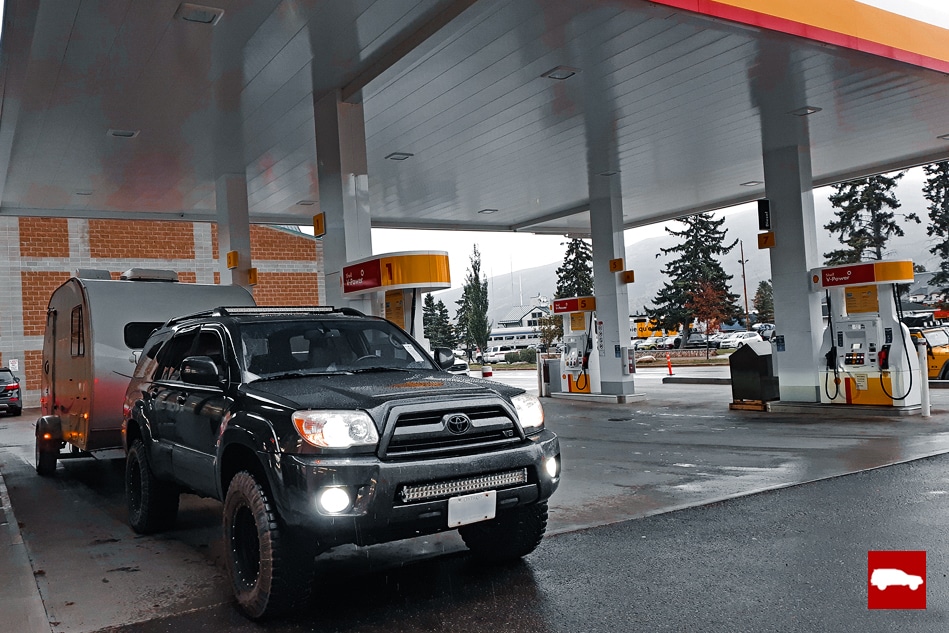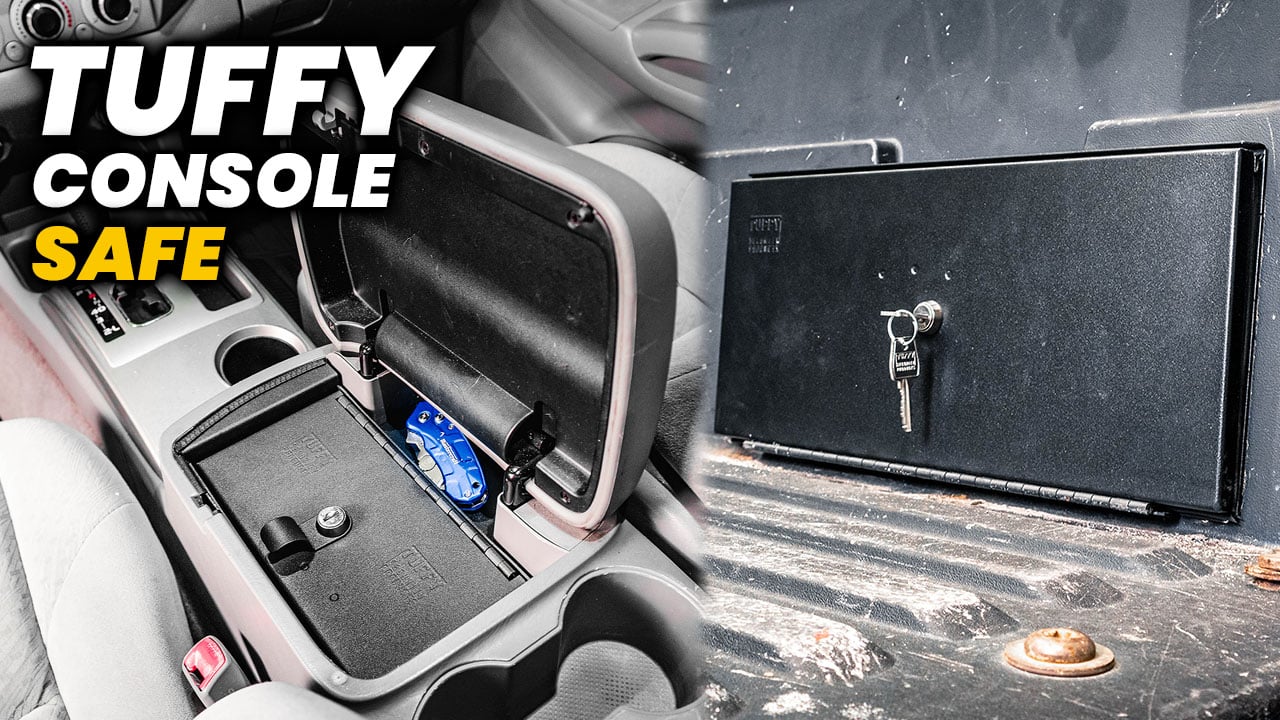The Toyota 4runner is legendary for a couple of reasons: its off-road prowess and reliability. Unfortunately, the 4Runner’s legacy comes with less than reasonable gas mileage though.
The Toyota 4runner is bad on gas because of poor aerodynamics, outdated gearing, disregard for fuel efficiency during the design process, and the additional weight from heavy 4×4 components. Some models and engine configurations are better than others, but in general, 4runners are not fuel efficient.

The 4Runner Has Bad Aerodynamics
This shouldn’t really be a secret to any of us. If you just look at a 4Runner from any generation, you will immediately notice their wide wheelbases as well as how flat and boxy they are. The 5th generation 4Runners are especially poor on gas mileage because they are built like tanks. Sure, they might be curvier than your 1st and 2nd gen 4Runners, but they weigh a good thousand pounds more.
Back on the topic of aerodynamics, if you were to compare the body lines of a Camry to a 4Runner side by side, you will notice a few significant things with the most significant thing being the difference in body lines.
The windshield of the Camry is much more slanted than the 4Runner’s as well as the roof. The 4Runner features a bold, flat windshield and a flat roof, whereas the Camry has a long, sleek windshield and gently curved roof, therefore providing minimal air resistance.


In layman’s terms, the best comparison would be cutting into a piece of meat with a sharp steak knife (Camry) or a butter knife (4Runner).
In addition to poor body lines on the 4Runner, the wider, bigger tires are less than ideal when it comes to cutting through the air below the body. This especially becomes a stronger point of consideration after mounting bigger tires and offset wheels/spacers on your 4Runner.
Gearing in the 4Runner is Outdated Compared to Its Competitors
It seems like a common theme for Toyota’s engineers is “don’t fix what isn’t broken”, and the transmissions are a prime example of this. Since 2005, Toyota has basically been putting the same 5-speed tranny into their 4Runners.
Back then, 5-speed transmissions were a hot commodity compared to the slow, inefficient 4-speed. The additional gear meant more gears to work with, which ultimately meant better fuel efficiency traveling at interstate speeds.
Having that extra gear allowed the 4Runner to sit at a lower RPM when traveling 50+ mph on a straight road and not have to constantly switch between 3rd and 4th.

However, with many of today’s vehicles being made with nothing less than an 8-speed, you could imagine that the 4Runner isn’t really keeping up with its traditional 5-speed.
Let’s compare the latest model Ford Bronco with the latest model Toyota 4Runner. The Bronco features an efficient 10-speed transmission, whereas the 4Runner, as previously stated, features the once “efficient” 5-speed.
The only area the 4Runner will beat out the Bronco is in lower gears (1st and 2nd). However, when traveling on the interstate at 65-70mph, the Bronco will easily walk the 4Runner in fuel efficiency (and probably acceleration too).
Having the 10-speed allows the Bronco to bang through the gears and get the truck up to speed without breaking a sweat (0-60mph in 6.6 seconds). On the contrary, the 4Runner only has 5 gears to bang through, and honestly, there isn’t a whole lot of “banging” going on (0-60mph in 8.0 seconds).
However, the 4Runner is a vehicle made for the dirt, rocks, mud, and whatever else you throw at it, so really who cares about speed? Just as long as there is enough low-end torque (which there is), that is all that really matters.

4Runners Were Not Designed with Fuel Efficiency in Mind
Toyota’s ultimate trade-off when it comes to their “heavier” vehicles such as the 4Runner, Tacoma, and Tundra is more reliability, and less efficiency. This is mostly due to the fact that Toyota builds their vehicles with heavy, quality parts.
For example, competitors may use a lighter metal such as aluminum rather than steel just to make their vehicles more efficient. Additionally, some competitors’ engine parts that are traditionally made out of metal have started to become plastic to increase fuel efficiency.
Fortunately, Toyota has never cut corners which is why nearly every Toyota will last a lifetime if they are properly taken care of.
When purchasing a 4Runner, please consider that you will not get the best gas mileage compared to similar vehicles. There are things you can do to slightly increase your fuel economy, but otherwise, you have to come to terms with yourself that you bought your 4Runner for reliability, not efficiency.
Heavy 4WD Parts and Rotational Weight of Tires
Naturally, 2WD 4Runners will get slightly better gas mileage than a 4WD 4Runner because there are fewer parts to consider. The difference between the 2WD and 4WD is the additional drive train parts: a transfer case, an additional differential and driveshaft, and two CV axles. With all these extra parts, you can expect to add an additional 3-400 lbs. to your 4Runner.

Along with your heavy 4WD parts, the rotational weight of your tires is also going to impact fuel efficiency. Most 4Runner owners with 4WD will end up putting bigger, heavier tires on their trucks to make them more capable than they already are.
With this comes more weight to rotate forwards, therefore requiring more engine power and more fuel depending on how big and heavy your tires are. You can get bigger gears to help accommodate bigger tires and obtain better fuel efficiency.
Are You Unsure if Your 4Runner is Getting the Proper MPG?
Below is a table for each generation’s gas mileage according to the EPA:
| Generation | 1st (1984-1988) | 2nd (1989-1995) | 3rd (1996-2002) | 4th (2003-2009) | 5th (2010-Present) |
| EPA Rating (MPG) | 18/22/19 | 16/19/17 | 16/19/17 | 15/19/17 | 17/20/18 |
If you think your 4Runner should be getting better gas mileage, here are some things you can check on:
- Spark Plugs (change every 60k miles)
- Seized Calipers
- Throttle Body/MAF Sensor (clean every 30-40k)
- Improper Alignment/Balance
- Faulty Evap System (Check Engine Light will likely be on; scan with a code reader)
- Engine Air Filter (replace every 20-40k miles; depends on where you are driving)
Final Word
At the end of the day, the 4Runner is an extremely reliable vehicle. You will never really have to question whether or not you will be able to get to where you need to go. Sure, Toyota loves to keep their vehicles outdated and less than reasonable on gas, but it all comes with the peace of mind that you will always return home with no problems.

Tim is the creator of Canadian Gearhead. His experience with auto detailing and working for Toyota shows through all of the articles posted here. He runs the Canadian Gearhead site and YouTube channel full-time now and currently owns a 2007 4runner, 2006 Tacoma, and 1991 MR2. Read more about Tim:





Leave a Reply